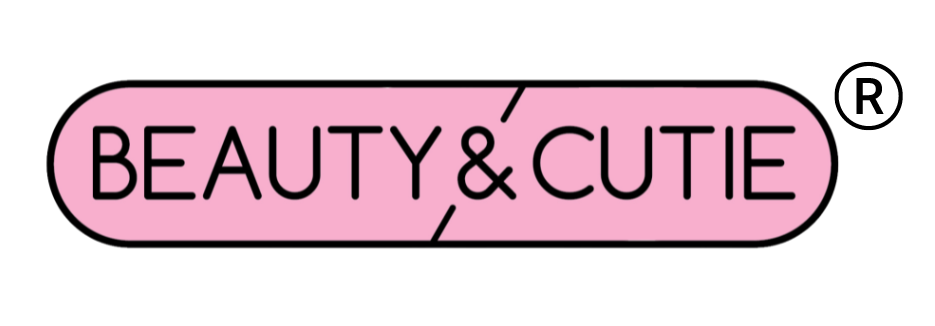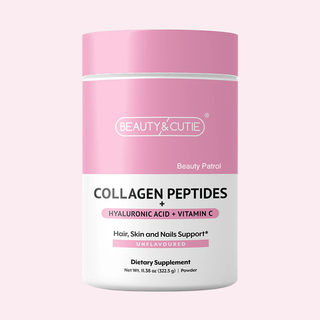Navigating the world of dietary supplements can be overwhelming, especially when it comes to reading the labels. With so many products on the market and varying guidelines for labeling, it can be hard to know what you're actually putting into your body. That's why we've created this Dietary Supplement Labeling Guide to help you decipher the information on the label and make informed decisions about what you're consuming. In this guide, we'll provide an overview of the regulations set by the FDA for supplement labeling and break down the five required statements that must appear on every supplement container. By the end of this post, you'll have the knowledge and confidence to read and understand dietary supplement labels like a pro.
What Is The Definition Of a Dietary Supplement?
A dietary supplement is a product that is intended to supplement the diet and contains one or more dietary ingredients, such as vitamins, minerals, herbs, amino acids, or other substances. These products come in various forms, including capsules, tablets, liquids, and powders, and are often marketed as a way to improve overall health and wellness.
Dietary supplements are regulated by the U.S. Food and Drug Administration (FDA) and must adhere to strict guidelines and regulations for labeling, safety, and efficacy. It is important to consult with a healthcare provider before taking any dietary supplement to ensure it is safe and appropriate for individual needs.
What Information Is Required On a Dietary Supplement Label?
Dietary supplement labels must contain five required statements. These include the identity, which is the name, title, or type of the supplement, the net quantity of contents (e.g. weight, volume, number of tablets, capsules, gels, etc.), nutrition labeling (Supplement Facts), the list of ingredients, and the name and place of business of the manufacturer, distributor, or packer. The main label on the front of the container or package must contain the identity and the net quantity of contents.
If all five requirements are not placed on the front main label, they must be placed on information panel labels located immediately to the right of the main label. It is important to note that brand names should not be overly prominent compared to the statement of identity.
The net quantity of contents statement should be located within the bottom 30% of the main label and should be prominently displayed. The nutrition label for a dietary supplement is known as a "Supplement Facts" label, which is different from a Nutrition Facts label that is found on food products.
What Types Of Warnings Should Be Included In a Dietary Supplement Label?
When it comes to dietary supplements, it is important for consumers to be aware of any potential risks or warnings associated with their use. The FDA requires that all dietary supplement labels include certain types of warnings to inform consumers about the product's safety and proper use. Here are a few examples of the types of warnings that may be included on a dietary supplement label:
- Warning statements about potential health risks: Depending on the ingredients in the supplement, the label may include warnings about potential risks associated with use. For example, a supplement containing high levels of caffeine may include a warning about the risk of heart palpitations or other adverse effects.
- Statements about appropriate use: The label may include instructions about how to use the supplement properly to maximize its benefits and avoid any potential risks. For example, a label may recommend taking the supplement with food or water or may specify a maximum daily dosage.
- Information about potential drug interactions: If the supplement may interact with other medications or supplements, the label should include a warning about this. Consumers should always check with their healthcare provider before taking any new supplement to ensure that it is safe and appropriate for them to use.
- Allergy warnings: If the supplement contains any common allergens (such as peanuts, soy, or dairy), the label should clearly indicate this to help consumers avoid any potential allergic reactions.
In addition to these specific warnings, all dietary supplement labels must also include the name and contact information of the manufacturer or distributor.
What Statements Are Prohibited From Appearing On a Dietary Supplement Label?
There are several statements that are prohibited from appearing on a dietary supplement label. According to guidelines set by the FDA, a dietary supplement label cannot make claims that it can cure, prevent, or treat any disease. Additionally, for compliance reasons, statements that suggest the supplement is a substitute for a balanced diet or that it can replace the need for medication are also not allowed.
The label cannot use words like "guaranteed" or "scientific breakthrough" either, as this can be misleading to consumers. It is important for manufacturers to adhere to these guidelines in order to provide accurate and honest information to consumers.
Are There Any Specific Guidelines For The Formatting Of a Dietary Supplement Label?
Yes, there are specific guidelines for the formatting of a dietary supplement label set out by the FDA. The label must include the identity (name/type of the supplement), the net quantity of contents (eg. weight, volume, number of tablets, capsules, gels, etc.), nutrition labeling (Supplement Facts), list of ingredients, and the name and place of business of the manufacturer, distributor or packer.
The main label on the front of the container or package must contain the identity and the net quantity of contents. If all of the 5 requirements are not placed on the front main label, they are to be placed on information panel labels located immediately to the right of the main label. Brand names should not be overly prominent compared to the statement of identity as brand names are not considered a statement of identity.
The net quantity of contents statement advises consumers about the amount of dietary supplement that is in the container. The guidelines state that information is to be located within the bottom 30% of the main label and should also be prominently displayed, with a large and readable type size (or print size).
The nutrition label for a dietary supplement is known as a "Supplement Facts" label. It is different from a Nutrition Facts label that you find on foods. A few important differences are that dietary ingredients without a recommended dietary intake (RDI) or daily value (DV) do not have to be listed, and the units of measure and daily value percentages may differ from those used on the Nutrition Facts label.
How Should Ingredients Be Listed On Dietary Supplement Packaging?
The FDA has specific guidelines on how ingredients should be listed on a dietary supplement label. The list of ingredients must be included on the label, and it should be listed in descending order of predominance by weight or volume. If the dietary supplement contains any proprietary blends, then the individual ingredients within the blend do not need to be separately listed in descending order.
However, the total weight or volume of the blend must be listed, along with the individual ingredients in order of predominance. Additionally, any inactive ingredients, such as fillers or binders, must be listed on the label as well. It is important to carefully review the list of ingredients on a dietary supplement label to ensure you are aware of exactly what you are consuming.
What Other Labeling Requirements Should Be Considered For a Dietary Supplement?
When it comes to labeling requirements for dietary supplements, there are a few additional things to consider beyond the five statements that are required to appear on supplement containers and packages. Here are some other labeling requirements to keep in mind:
- Health claims: If a dietary supplement makes a claim about reducing the risk of a disease or health condition, the claim must be accompanied by a disclaimer that the FDA has not evaluated the claim. The disclaimer must also state that the supplement is not intended to diagnose, treat, cure or prevent any disease.
- Structure/function claims: Dietary supplements can make claims about how they affect the structure or function of the body, such as "supports joint health" or "promotes healthy digestion." These claims must be truthful and not misleading, and they must also be accompanied by a disclaimer that the FDA has not evaluated the claim.
- Serving size: The serving size for a dietary supplement must be based on the amount of the product that is customarily consumed, or on the amount recommended on the product label. If the dietary supplement is a powder or liquid, the serving size must be expressed in weight or volume.
- Daily value: The daily value for each dietary ingredient must be listed on the Supplement Facts label. The daily value is the recommended daily intake of the nutrient, based on a 2,000-calorie diet. If the daily value cannot be determined, the label must state that fact.
Conclusion
In conclusion, understanding the labeling requirements for cosmetic products and dietary supplements is crucial for making informed decisions about the products you use and consume. The FDA has set specific guidelines for labeling, including requirements for the size and content of labels, as well as the listing of ingredients and possible allergens.
When it comes to dietary supplements, in addition to the five required statements, there are also guidelines for health claims, structure/function claims, serving size, daily value, and allergens. By carefully reviewing the label of a product, you can ensure that you are aware of the ingredients and any potential risks associated with its use. Always consult with a healthcare professional before taking any new supplements or products.
Final Thoughts
Glow from within with Beauty and Cutie’s powerful collagen blend. Formulated with collagen peptides and amino acids, it’s the ultimate solution for vibrant hair, skin, and nails. Support optimal cell production and unlock your healthiest beauty yet. Transform your look and elevate your confidence with Beauty and Cutie’s collagen powders!
Sources
- https://www.cancer.gov/publications/dictionaries/cancer-terms/def/dietary-supplement
- https://www.chpa.org/public-policy-regulatory/regulation/regulation-dietary-supplements/labeling-dietary-supplements
- https://www.herbalgram.org/resources/herbalgram/issues/104/table-of-contents/hg104-legreg-failuretowarn/
- https://www.webmd.com/vitamins-and-supplements/news/20230502/beware-the-hidden-allergens-in-nutritional-supplements
*These statements have not been evaluated by the Food and Drug Administration. This product is not intended to diagnose, treat, cure or prevent any diseases.


